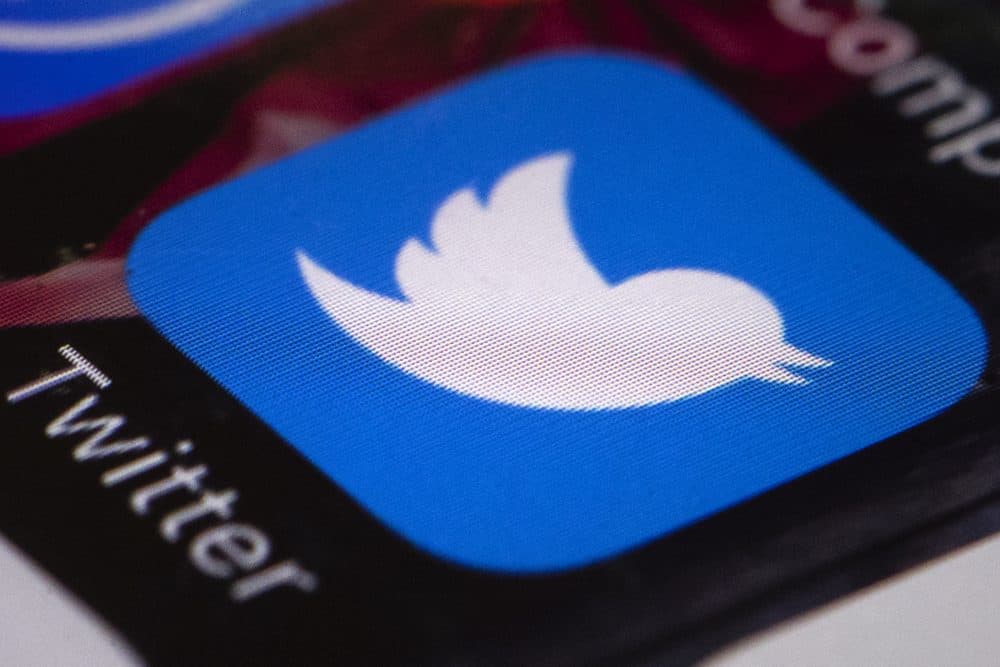Advertisement
False News Travels Farther, Faster Than The Truth, MIT Study Finds
Resume
They say bad news travels fast, but a new study suggests that false news does as well. And, at least on Twitter, it goes even farther than facts.
"False news travels farther, faster, deeper and more broadly than the truth in every category of information and sometimes by an order of magnitude," said Sinan Aral, the paper’s senior author and head of MIT’s Initiative on the Digital Economy.
People who use Twitter are novelty junkies, the study suggests, and they often forward surprising, disgusting or fear-inducing information without stopping to check if it's true.
Previous research has found that someone who shares novel information gains social status, because they seem to have inside information, Aral says.
"Obviously, it's easy to be more novel when you're unconstrained by reality," he says.
"Obviously, it's easy to be more novel when you're unconstrained by reality."
MIT's Sinan Aral
For the study, published Thursday in the journal Science, researchers analyzed 4.5 million tweets sent from 2006, the year the social media platform debuted, until the end of 2016. These tweets covered 126,000 Twitter cascades of true and false stories, verified by six independent fact-checking organizations.
Fake information was 70 percent more likely to be retweeted than facts, the study showed.
And accurate tweets were rarely passed along more than about 1,000 times, while whoppers were retweeted as many as 100,000 times.
“These results are important and disturbing,” says Aral, who collaborated on the paper with MIT Media Lab post-doc Soroush Vosoughi, and Media Lab professor Deb Roy.
Society often reinforces an uncritical view of information, says David Lazer, a professor of political science and computer and information science at Northeastern University, who was not involved in the new research but co-wrote a commentary that ran alongside it.
We tend to pay more attention to and be less critical of information that matches our beliefs, says Lazer, also a visiting scholar at the Institute for Quantitative Social Science at Harvard.
Playing loose with the facts can have serious consequences.
During President Obama’s tenure, one false tweet claimed that he had been injured in an explosion. Stocks tumbled, wiping out $130 billion in stock equity in a single day.
“The spread of falsity in our society can have potentially very dramatic consequences,” Aral says.
False political news spreads faster and further than any other type of false news, suggesting that the content of tweets matters. Although Aral says he hasn’t yet studied why politics seems particularly vulnerable to fake news, he thinks it’s partly due to attention and at least partly to partisanship.
Political news, he says, “is all over the news cycle. People are seeing it in the media and so it’s front of mind.” And of course, some people have a political motive behind promoting one candidate or trashing another.
It's real people -- not bots -- who are mainly responsible for passing on fake information, Aral says.
“Although bots contribute to the spread of false news, they contribute to the spread of true and false news at approximately the same rate,” he says. “Bots can't explain this difference between the spread of false news and the spread of true news, this massive difference in how far and fast and broadly it spreads.”
The people most likely to spread false information are not well-respected voices on social media, the study found. Instead, they aren’t particularly active on Twitter, they have few followers, and are unlikely to have earned Twitter’s checkmark of authenticity.
Lazer says he doesn’t think the problem of fake news will ever completely go away --spreading false information is part of human nature. “But I think the degree is going to depend on how we deal with the governance issues of information in the 21st century,” he says.
Aral says much more research is needed to develop appropriate strategies for reining in fake news. One possibility — which hasn’t yet been researched — would be to add a labeling system, flagging social media posts that are likely to be false, just as cellphones now identify “scam likely” on some incoming robocalls.
Another route would be to change the economic incentives that social media offer, Aral says. Right now, incentives reward people who spread fake, attention-grabbing information. More eyeballs equal more advertising dollars. Changing those incentives to deter fake information could make a difference. “And you see now platforms like Facebook and others starting to do that," he says, "by reducing the visibility of accounts that are known to be spreading false news.”
Twitter, for its part, recently announced a program to solicit ideas from the public about how it can “increase the collective health, openness, and civility of public conversation around the world, and to hold ourselves publicly accountable toward progress.”
At an individual level, Aral says people need to be more skeptical about what they pass on. “I absolutely believe that we have a responsibility as citizens to be more educated about what is true and what is false and to take responsibility for the information that we're sharing,” he says.
This article was originally published on March 08, 2018.
This segment aired on March 8, 2018.
